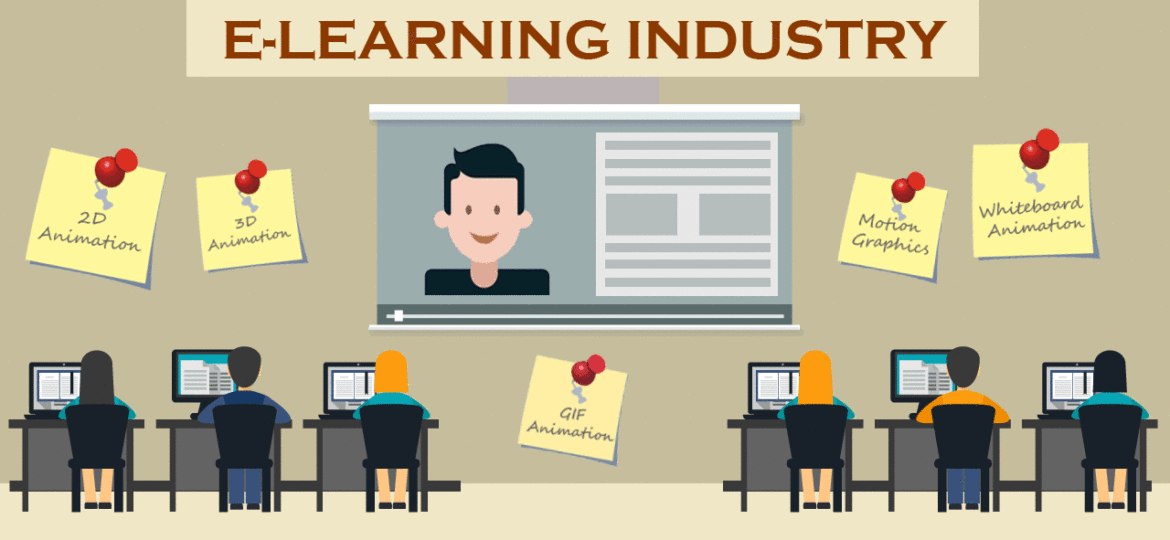
I’ve recently come across an interview with Tim Slade – a speaker, author, and award-winning E-Learning designer. He stated:
“When used properly, animation can bring your content to life and engage your learners. When combined with powerful visuals and audio narration, animation can be used to explain complex ideas, processes, or concepts by creating a multi-sensory learning experience. Even after the learning has long ended, the types of multi-sensory learning experiences help to make the content “stick” in the learner’s mind.”
This pretty much sums up the importance of animations in the E-Learning industry. To be honest, the most part of E-Learning will be reduced to mere E-Books and websites if we take out the animation. So, what is animation and what are its benefits?
Types of Animation:
In layman’s terms, an animation is nothing but a series of images infused to give the appearance of a moving image or object. Animation can take various forms:
- 2D animation: As the name suggests, 2D animations are vector image based animations created using the Apart from vectors, 2D animations can be created using text and photographs also. Most of the animations we see are some form of 2D animation. 2D animation services are comparatively cheaper. Many E-Learning companies in India offer 2D animation. Some expert from E-Learning industry also leverages dedicated animation companies for creating high-end animations and then integrating into E-Learning module.
- 3D animation: As the name suggests, 3D animations utilize 3D objects with different viewing angles. 3D animations are livelier and are a treat to the eye. Although a little costlier, many E-Learning service providers offer state-of-the-art 3D animation services.
- Whiteboard animation: Whiteboard animations are a special class of animations that tell a story utilizing icons, objects, texts, and images depicted on a whiteboard background usually shown as being drawn by a cutout hand (usually a real image of a hand). They create a unique viewing experience with compelling storytelling capability.
- Motion graphics: Motion graphics are a form of animation created using images and text, most popular being logo animations, product animations, etc.
- HTML animation: HTML animations becoming popular day-by-day due to easy accessibility using mobile devices. HTML animations are created using a combination HTML, CSS and JavaScript codes.
Benefits of Animation:
According to ACRS model, the very first component to create an effective learning intervention is grabbing the attention of the learning. And who can do this better than animation? Well, that’s only a beginning; animations offer a plethora of benefit for the E-Learning industry.
- Engaging: Animations are way better than static text and images to help you keep your learners engaged in the content.
- Entertaining: Animation gives you the scope of adding comic relief and entertain the learners to reduce the load of serious learning.
- Breathes life into content: Animations definitely make the learning livelier. Learners have reported animation much more engaging to absorb content rather than dry texts and images.
- Memorable: viewing an image is more memorable than reading the text. Viewing an animation is even more memory-friendly as it creates a lasting impression.
- Powerful learning mechanism: With animations, you can leverage multi-sensory experience of learning including images, visuals, texts, character narratives and much more. This definitely makes it easier for the learners to grasp the subject easily. In addition, it allows you to leverage storytelling techniques of teaching in the most compelling way.
- Demonstrating the subject visually: One of the key benefits of animation in E-Learning is its ability to visually demonstrate the subject. Just imagine you are reading about blood circulation in the body and watching an animation of blood flow. Which would be more effective learning? The answer is obvious. Similarly, 3D models can be used to teach about machines, body parts, designs, etc.
- Simplifying complex information: Owing to its visual nature, animations can be utilized to simplify complex concepts.
- Attitude toward future training: When your learners experience an engaging content, definitely they’ll be more motivated to take future modules to learn new concepts.
Conclusion
Many objectives of the teaching/learning process could be easily achieved with proper use of well-prepared animations. Increased use of animations in education can result in deeper and better retention of understanding of the concept, mastery of a skill or strategy or acquisition of knowledge.
